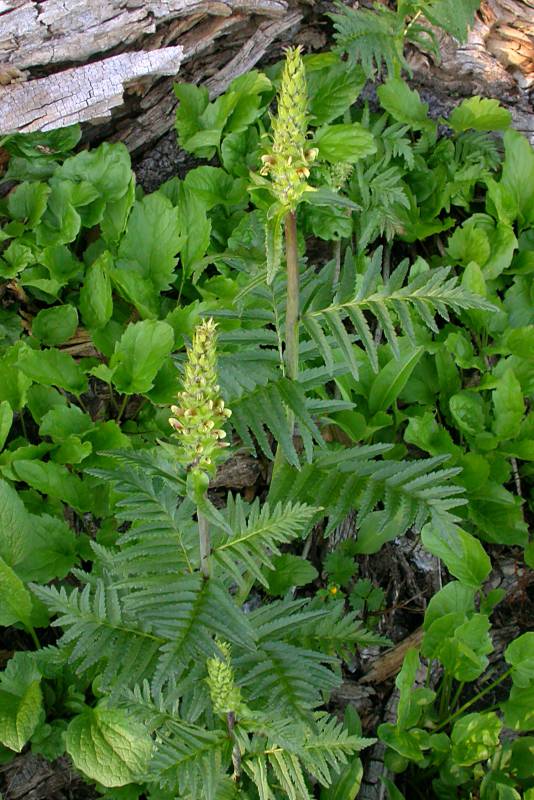Pedicularis attollens
Pedicularis bracteosa
bracted lousewort
Cauline leaves alternate, numerous, short-petiolate or sessile, pinnatifid, the principal segments distinct, linear-oblong to lanceolate, 1-7 cm. long, somewhat incised and again finely serrate; uppermost leaf segments smaller;
basal leaves similar, but with longer petioles, or wanting.
Inflorescence a dense, spike-like raceme;
calyx lobes 5, the upper much the shortest, the others partly attached into 2 lateral segments;
corolla 13-21 mm. long, purple or red to bronze or yellow, bilabiate, the upper lip beakless, hooded, enclosing the 4 stamens, about as long as the tube; the lower lip much shorter, 3-lobed;
stigma capitate.
Capsule glabrous, flattened, curved.


